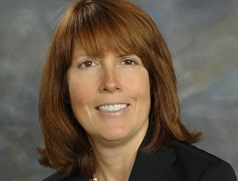THUNDER BAY -- School boards in Thunder Bay and across northwestern Ontario are confronting a high rate of student absenteeism.
Data supplied to the boards by the Ministry of Education shows that nearly 22 per cent of elementary school students are chronically absent, a rate considerably higher than the average of 13 per cent for school boards across the province.
As a result, the area boards are going to conduct more research, ramp up their surveillance of the problem, consider strategies for dealing with it, and launch a campaign to make school communities more aware of the seriousness of the issue.
A student is deemed to be chronically absent after being away from class at least two days each month on average. over the course of the school year.
"It impacts student learning, and consistency as well. It's hard to give a student the support they need when there are many absences," said Colleen Kappel, Superintendent of Education at the Lakehead District Public School Board, during an interview with tbnewswatch.com.
David Tamblyn, Director of Education for the Superior-Greenstone District School Board, added that research shows students who have high absenteeism in elementary school carry the problem over to high school, where "it can even lead to dropping out."
Tamblyn said there are a number of contributors to absenteeism, including some that affect rural boards in particular. "A lot of it can be around travel. There may be doctors' appointments, dental appointments where parents need to bring their child into Thunder Bay, and that lends itself to absenteeism." He said extracurricular activities such as hockey tournaments also play a role, and that "there's a lot around mental health."
In the months to come, board officials across the northwest will work with attendance counselors to get a better sense of issues leading to absenteeism.
But some steps have already been taken.
At the Lakehead board, a pilot project saw a recent enhancement of the Safe Arrival program at three schools, in which parents are required to call in if their children will be absent. Kappel said the automated system will be expanded to all schools next fall, as "it is having an impact on improving attendance."
She noted that the system also helps ensure the safety of students in the case of absences that may otherwise be unexplained. "Parents are calling in more regularly, and then we're not as concerned because we know where the student is."
Kappel said a Lakehead University faculty member has also been enlisted to help identify absenteeism trends over the past couple of years. "What we're finding is that people are coding absences differently...so we're trying to get a handle on that so we're comparing apples to apples." She said the boards need to know the historical trends at both the elementary and secondary levels in order to establish a baseline which can be used to track progress in dealing with the problem.
Data for absenteeism at the secondary level has been more difficult to gather, partly because statistics need to be collected for attendance by students in each of four courses per term. Currently the ministry only provides the information from the elementary level, but Kappel said board officials are "trying to really dig into" the secondary school attendance data as well.
As for future steps, the area boards are poised to make a public announcement in May related to absenteeism.
"We're working through strategies that we think are going to support better attendance at school...We're certainly looking at providing schools with the tools they need to implement the campaign," Kappel said.
Tamblyn added that eight boards across the northwest will be involved in the project.
